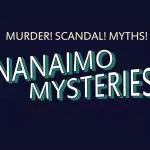
‘It’s just a disaster:’ army of volunteers out on annual cull of invasive Scotch Broom
NANAIMO — It’s invasive, it’s destructive and a passionate group of volunteers are suiting up for their annual war to destroy it.
Broombusters have begun their annual cull of the invasive Scotch Broom plant, an invasive and alien species brought to the Island in 1850.
Joanne Sales, executive director of the Broombusters Invasive Plant Society, told NanaimoNewsNOW it does so much damage because there’s little stopping it from spreading.
“It’s a heartier plant than any of our native plants so it spreads so quickly, so densely that it’s a serious threat to biodiversity. It crowds out native plants, it keeps forests from regrowing, it changes the soil chemistry, it’s just a disaster.”




